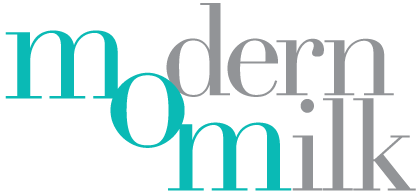One of the most common questions breastfeeding moms ask themselves is “how do I know if my baby is getting enough?” Being able to breastfeed your baby is beneficial in so many ways! One of the biggest perks is that you don’t need to worry about the nuisances that come with bottle feeding. You don’t need to measure and mix formula, you don’t need to spend time washing and sterilizing bottles and you don’t need to calm a crying baby while waiting for a bottle to warm. However, one of the biggest challenges is that you cannot measure how much milk a baby drinks at breast in the same you can measure how much a bottle-fed baby is drinking. Thankfully, baby was born equipped with many biological signs and reflexes to help guide us through our nursing relationship.
Early Signs of Hunger
When baby shows early signs of hunger: stirring, smacking lips and sticking out her tongue you can pick baby up at latch her. If you missed these early cues, baby may then start to use her natural rooting reflex and move her mouth towards her hands and fists and will turn her head towards “pressure” or objects she thinks could be your breast. This is innate behavior that she learned and practiced for months in your belly. When baby is sucking on her hands and moving her head, she’s showing you that she is hungry. Remember, the latch will be much easier when you feed at these early hunger signs, versus waiting for baby to cry. Latching a crying “hangry” baby can prove to be very challenging.
Breastfeeding Your Hungry Baby
When we latch baby, we want to make sure that we feel a firm and comfortable pull-tug sensation. Baby will pull milk from the milk ducts behind your areola, so baby needs a substantial amount of breast tissue in her mouth to get breast milk, (remember it’s called breast milk not nipple milk. Your baby pulls milk from your breast and not the tip of your nipple). You will see baby open and close her jaw in consistent and rhythmic motion and you will see swallowing below her chin and hear a “kah” sound every 1-3 sucks. You will see your hungry baby with a tense body and stiff elbows while making tight fists as she rhythmically sucks at your breast in a consistent pull-tug rhythm. As time progresses, baby may slow or fall asleep. This may not necessarily mean that baby is done nursing or has taken enough breast milk to gain weight.
The “Sleepy” Breastfeeding Phase
When baby begins to fall asleep at the breast you can try to gently squeeze your breast to give baby a small stream of milk to help her to continue to suck, you can tickle under baby’s elbow or lift up her arm, or you can compress her feet toward your body. Once you have tried all these waking tactics (along with nursing baby in just a diaper in a dimly lit room) if baby appears to be sleeping or finished sucking then unlatch baby and burp her. Baby may also unlatch herself. Remember, once baby has finished the first side, you will always offer the other breast. This will protect your milk supply and ensure that baby gains weight. She may take this second side, or she may be finished, and both are okay.
Signs of a Full Baby
Once your baby is full, she will look like she’s full! She will appear relaxed, content, and possibly sleeping. She will typically have open palms and floppy arms with a loose/soft body, she may have the hiccups or may be alert and content. If you’re not sure if she is finished, you can try the “palm and elbow test.” Pick up her arm and look at her palm, is it relaxed and slightly opened or is it in a tight fist? When you pick up her arm does it feel tense and rigid, or does it fall back into place as if she is a doll? If it does, she is likely full. If not, she is using her biological signs to show you that she needs to continue to breastfeed. If you are still not sure, you can attempt to lay your un-swaddled baby down on a safe and flat surface or hand her to another person in the room. Does she continue to sleep, or has she started to rouse and eat her hands? Generally, a full baby will continue to sleep. You will also feel that your breast has emptied or softened when your baby is finished nursing. If your breast still feels very firm, baby may need to spend more time at breast removing your breastmilk. If you have tried these tactics and you are still unsure, the great part about breastfeeding is that you can always try to offer baby the breast again. They are always available and ready to feed a hungry baby! Offering the second or “third” breast (meaning the first breast you started feeding on if baby took both breasts) is one of the best ways to tell if baby is finished nursing. A hungry baby will typically take the breast and keep nursing in a steady and rhythmic pace.
Just remember that it is more important to look at the signs our baby and body are giving us, rather than the clock. Setting a time limit at breast and starting or stopping feedings may disrupt the way breastfeeding was designed to work. Both you and baby are filled with biological cues to help you successfully breastfeed. It’s also important to remember that you can seek out help from your friends, family or breastfeeding experts to help guide you through your breastfeeding journey.
– Katie Kunz, RN, IBCLC



